As an organization, there are times when you feel comfortable with your current position and other times when you feel like something needs to change. Regardless of whether you’re comfortable or not, the desire to grow and improve is always there. But what is the driving force behind this desire for change? When embarking on any journey of change, it’s crucial to have a solid driver for that change.
To gain insight into why our top one hundred customers were implementing new processes within their organizations, we conducted a survey. Based on the survey results, we identified the top reasons for change. However, before you dive into the survey results, take a moment to consider this: if someone were to ask you and your team why you want to adopt a new strategy execution methodology or tool, you might all have different answers. That’s because there are often multiple reasons for change, depending on the perspective of each team member. However, we believe that one hundred percent of the time, the reasons for change that your team shares will be reflected in our list of top reasons.

Let’s look at each of these reasons in some detail to understand the change management process.
Improve Visibility
Improved visibility is a highly desirable outcome for many organizations, and as such, it is one of the most popular reasons for change. When you define your Objectives and Key Results (OKRs) at the company and department levels, you’ll notice an immediate shift in how you operate. Suddenly, you have a clear view of the OKRs of your organization, and you can easily see how your own goals contribute to the overall mission. In addition, you can now access the goals of different departments via a dashboard, providing you with a comprehensive overview of your organization’s priorities.
As an example, if you work in sales and can access marketing goals, you can easily determine how many leads your team needs to generate. Similarly, if you’re in IT and planning to expand your team, you now have visibility into HR and whether they align with your objectives. This newfound visibility offers a significant advantage, allowing teams to align and collaborate effectively toward shared objectives. By working together towards a common goal, organizations can achieve greater success and drive real change.
Goal: Launching a new software Product
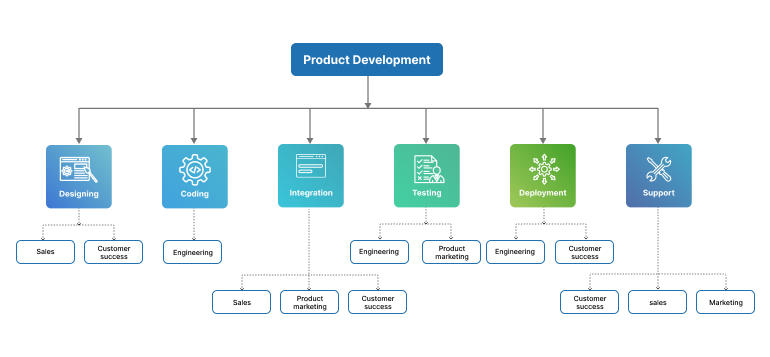
Bridge Strategy Execution Gap
Implementing Objectives and Key Results (OKRs) is a popular solution for bridging the strategy execution gap, which is one of the most common reasons for
OKR implementation. In any organization, high-level goals and strategies exist, even if they’re not labeled as OKRs or follow the same format.
Unfortunately, many employees become frustrated when they can’t achieve the goals they’ve set, leading to execution problems and strategy failures. This frustration has made bridging the strategy execution gap the top priority for most customers.
Different companies have varying objectives, meaning that their goals can differ greatly. While some organizations struggle with managing growth, others struggle with stimulating
development. However, regardless of the strategy, a strategy-execution gap is always present. Therefore, bridging the gap between strategy and execution is essential for achieving organizational success, making OKR implementation a valuable tool for many companies.
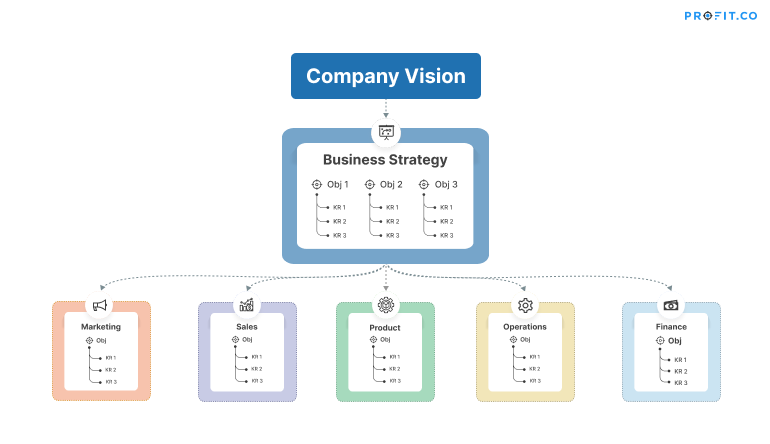
Ensure Alignment Across the Various Levels of the Organization
After defining corporate and department-level objectives and key results, the next step is to ensure alignment between those levels. Alignment is essential for the success of any management methodology, as it guarantees proper allocation of resources to strategic objectives that the organization has committed itself to. If a corporate objective lacks alignment with the appropriate departments responsible for supporting it, it’s a big red flag.
Alignment shouldn’t be limited to just top-down and bottom-up alignments approaches It can extend across the entire organization, fostering collaboration between various departments. By achieving alignment across the organization, teams can work together towards shared goals, improving efficiency, and achieving greater success.

Track the Progress of Goals
Tracking progress is a crucial aspect of running any successful business. It enables leaders to monitor and evaluate the success of their strategies and initiatives, providing critical insights into areas that require improvement. Without tracking progress, it can be difficult to identify areas of concern and make informed decisions about how to improve performance.
However, it’s surprising how often progress is either not being tracked entirely or not being tracked in the most appropriate way. This can be due to a variety of reasons, such as a lack of resources, a limited understanding of the importance of tracking progress, or a failure to implement the necessary tools or methods. As a result, businesses may struggle to accurately measure their success, making it difficult to identify areas that require attention.
In some cases, businesses may use inadequate methods of tracking progress, such as relying on incomplete data or failing to consider key performance indicators (KPIs). This can result in inaccurate assessments of progress, leading to misinformed decisions and a lack of direction for the organization.
It’s essential for businesses to prioritize the tracking of progress and implement effective methods to do so. This may include setting clear KPI Tracking, using data-driven tools to monitor progress, and regularly reviewing progress reports to identify areas that require attention. By accurately tracking progress, businesses can improve performance, make informed decisions, and ultimately achieve greater success.

Take Moonshots
“Moonshots” is a term coined by Google that refers to ambitious and unconventional goals that push an organization to stretch beyond what they believe is possible. These types of goals are often seen as bold and daring, as they require significant effort, resources, and investment to achieve. However, the potential rewards can be immense, as they can lead to groundbreaking innovations and transformative change.
Many times, new innovations in large companies such as Google have happened due to taking moonshots. By setting seemingly impossible goals and investing heavily in research and development, Google has been able to create new technologies, products, and services that have transformed the way we live and work.
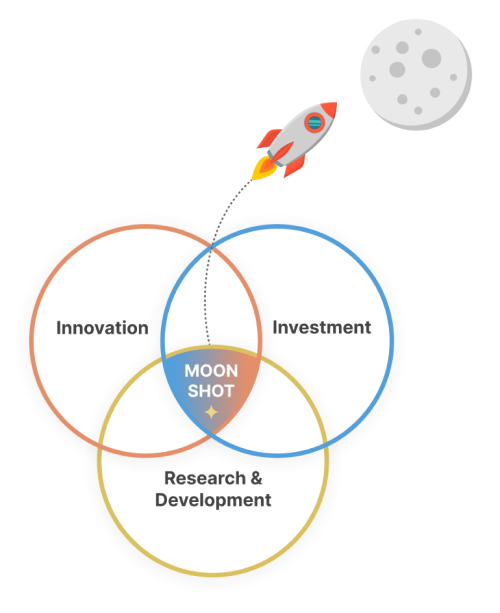
But taking a moonshot requires more than just setting ambitious goals. It involves committing significant resources, including financial and human capital, to achieve these goals. This can be a risky and challenging endeavor, as it may require significant investment without any immediate return on investment. However, with careful planning, a clear strategy, and a commitment to execution, organizations can successfully achieve their moonshot goals and drive transformative change.
To successfully take a moonshot, it’s essential to have alignment throughout the organization. This means ensuring that all teams and departments are working towards the same goals and objectives, and that everyone understands the importance of the moonshot initiative. This can help to create a shared vision and purpose, and ensure that everyone is working together towards a common goal.
Taking a moonshot can be a powerful way to drive innovation and transformative change in an organization. By setting ambitious goals, committing significant resources, and fostering alignment throughout the organization, businesses can push beyond their limitations and achieve something truly extraordinary.
To learn more about achieving continuous learning for your organization
Execute Like Silicon Valley
The popularity of OKRs among Silicon Valley-type companies has created a desire for other organizations to adopt the same methodology. This stems from the success rates that these companies have achieved by setting stretch goals and fostering an agile culture. The ability to adapt quickly and efficiently to changing market conditions is a crucial factor in the success of these companies, and OKRs have proven to be an effective tool in achieving this agility.
The desire to achieve stretch goals and execute like a Silicon Valley company has led to a broader trend of organizations embracing a more agile culture. This culture emphasizes collaboration, innovation, and continuous improvement, allowing teams to respond quickly to changing business needs. By embracing this culture, companies can become more nimble and better equipped to trade faster, giving them a competitive edge in the marketplace.
![]()
However, it’s important to note that adopting an agile culture and implementing OKRs is not a one-size-fits-all solution. Each organization has unique goals and challenges, and it’s essential to tailor the approach to fit these specific needs of their business strategy. Additionally, it’s crucial to establish clear communication and transparency throughout the organization to ensure that everyone is aligned and working towards shared objectives.
Become an Agile Organization
In today’s business world, change is constant, and companies that fail to adapt quickly are at risk of being left behind. This is why agility is critical for any organization, regardless of its size or industry. An agile organization has the ability to pivot quickly when the market demands it. This can mean anything from launching a new product line to adjusting business processes in response to changing customer needs.
Being agile means that companies are more responsive to new opportunities and can capitalize on them before their competitors. They are also able to quickly address any challenges that arise and avoid being left behind. For example, a company that is slow to adopt new technologies may miss out on important opportunities to improve its operations, reduce costs, or provide better service to customers. In contrast, an agile organization can embrace new technologies quickly and easily, giving them a competitive edge.
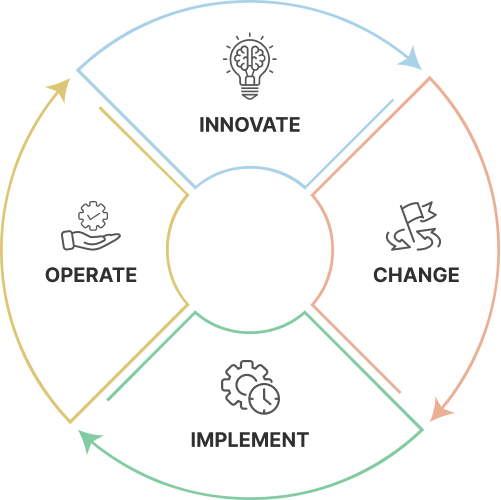
Another key advantage of an agile organization is its ability to innovate. Innovation is vital for companies to stay relevant and meet the needs of their customers. An agile organization is better equipped to experiment with new ideas and bring them to market quickly. They are able to identify opportunities for innovation and act on them, allowing them to stay ahead of the curve.
Overall, being an agile organization is not just about being faster or more efficient. It’s about being able to respond to change quickly and effectively. It’s about being able to innovate and stay ahead of the competition. In today’s fast-paced business environment, agility is no longer a luxury – it’s a necessity for survival.
Iterate Faster
Iterating faster is a critical component of the agile methodology, which aims to promote faster feedback loops and adaptability. By breaking down projects into smaller chunks and executing them in shorter cycles, teams can make more frequent course corrections and adjustments based on real-time feedback. This approach can help teams avoid the pitfall of investing significant time and resources into a project only to realize later that it is not a viable or effective solution.
By failing faster, teams can quickly identify what’s not working and pivot to a different strategy or approach that may yield better results. This saves time and resources and promotes a culture of experimentation and innovation, where failure is viewed as a learning opportunity rather than a setback.
In addition, faster iteration cycles allow teams to make progress toward their objectives in a more incremental and measurable way. This can help keep team members motivated and engaged, as they are able to see tangible progress and results more frequently. It also enables teams to quickly adapt to changing market conditions or customer needs, allowing them to stay ahead of the competition and maintain a competitive advantage.
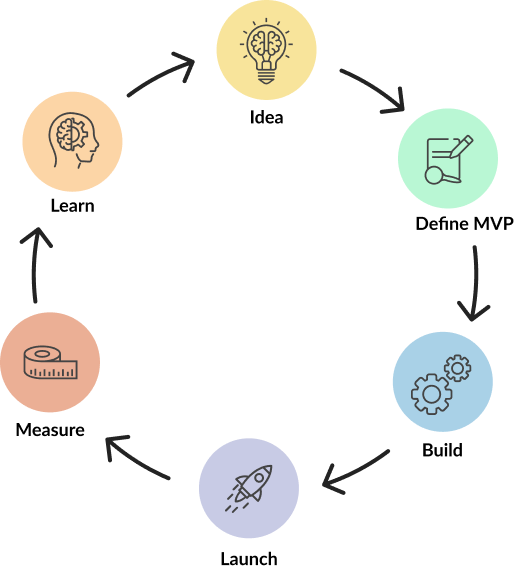
Overall, being an agile organization is not just about being faster or more efficient. It’s about being able to respond to change quickly and effectively. It’s about being able to innovate and stay ahead of the competition. In today’s fast-paced business environment, agility is no longer a luxury – it’s a necessity for survival.
Build a High-Performance Team
A high-performance team is a group of individuals who are aligned with a common goal and work collaboratively to achieve it. It is not enough to have a group of smart and talented individuals; these individuals need to be able to work together effectively. A framework or process is needed to guide the team toward working collectively and bringing the best out of each other.
The team needs to have clear communication channels, both formal and informal, to ensure that everyone is aware of the progress being made towards the common goal. Additionally, there needs to be a culture of trust and respect where team members feel comfortable sharing their ideas and opinions without fear of retribution.
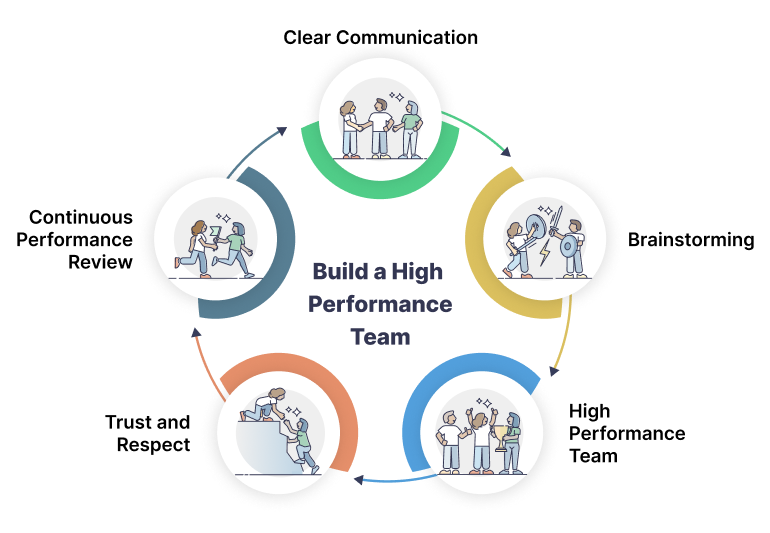
Effective leadership is also essential in building a high-performance team. The leader needs to have a clear vision of what the team is trying to achieve, and they need to be able to communicate that vision effectively to the team. The leader also needs to provide guidance and support to team members, ensuring that everyone is working towards the common goal.
Finally, the team needs to have a process for continuous improvement. This means regularly reviewing and analyzing their performance and making adjustments as necessary to improve their performance. This process should be ongoing, as there is always room for improvement, even for the best-performing teams.
Build a Culture of Transparency and Accountability
In a high-performance team, each member should be aware of their responsibilities and what is expected of them. However, individual accountability alone may not be enough. Collective accountability involves a shared responsibility for the success of the team, where each member is accountable for their contribution to the team’s goals.
By having a culture of transparency, team members can openly discuss challenges and concerns, seek feedback, and share knowledge and ideas. This transparency helps create a shared understanding of team objectives, progress, and challenges. When team members understand the impact of their work on the team’s overall success, they are more likely to take ownership of their contributions and be accountable for their results.
Collective accountability promotes collaboration, as team members must work together to achieve common goals. It also encourages continuous improvement as team members seek out ways to improve their performance and contribute to the team’s success.
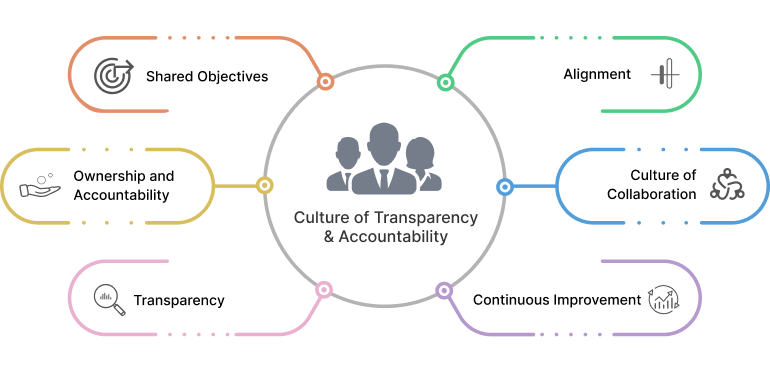
Overall, a culture of transparency and collective accountability can help build a high-performance team that is focused on achieving shared objectives, with each member taking ownership and responsibility for their contribution to the team’s success.
Conclusion
When it comes to driving change in an organization, having a clear understanding of the reasons behind the change is crucial. Without a strong sense of purpose and a clear goal in mind, it’s easy to lose focus and become disengaged. This is why it’s important to identify the “why” behind any change initiative.
As mentioned earlier, we listed 10 common reasons why most of our clients were driven toward change. These reasons range from a desire for improved visibility and alignment to the need to bridge the strategy execution gap and achieve stretch goals. By understanding these reasons, organizations can begin to identify which ones are most relevant to their own situations and tailor their change efforts accordingly.
Furthermore, having a clear understanding of the “whys” behind the change initiative sets the right tone for the organization. It helps to create a sense of urgency and purpose, and it provides a clear direction for everyone to follow. With a strong sense of purpose and direction, employees are more likely to be engaged and motivated, and the change initiative is more likely to be successful.
In short, understanding the “why” behind any change initiative is crucial for its success. By identifying the reasons behind the change, organizations can set the right tone and direction, create a sense of urgency and purpose, and ultimately drive toward the desired outcome.
Ready to start your OKR journey for free?
Related Articles
-
What is “Distance” in the REDUCE Framework From the Book Catalyst?
Bastin Gerald Founder & CEO at Profit.co Last updated: May 21, 2024 In "The Catalyst," Jonah Berger introduces the REDUCE... Read more
-
“Burn the Ships” Strategy for Effective Change Management in Business
Bastin Gerald Founder & CEO at Profit.co Last updated: May 17, 2024 In the realm of change management, the "burn... Read more
-
Costs of Inaction in Business
Bastin Gerald Founder & CEO at Profit.co Last updated: May 17, 2024 Documenting the cost of inaction in a business... Read more
-
4 Real-World Examples of Change Strategy
What do all successful companies and organizations have in common? The ability to develop and pivot their strategies for significant... Read more

